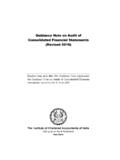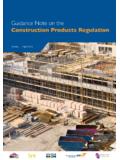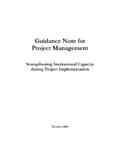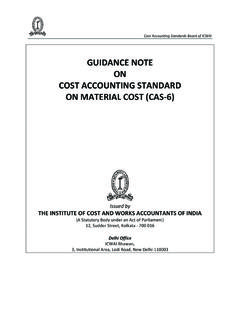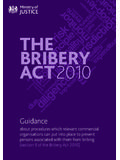Transcription of Guidance Note Number 7 - IHS
1 1 EPSGE uropean Petroleum Survey GroupGuidance Note Number 7 POSC literature pertaining toCoordinate Conversions and Transformations including FormulasThis information was compiled by EPSG members for the Petrotechnical Open Software Corporation(POSC). It is reproduced here with the permission of history:VersionDateAmendments1 December 1993 First release POSC Epicentre10 May 1998 Additionally issued as an EPSG Guidance 1998 Polynomial for Spain and Tunisia Mining Grid methods 1999 Abridged Molodenski formulas 1999 Lambert Conic Near Conformal and American Polyconic methods 1999 Stereographic and Tunisia Mining Grid formulas corrected. Krovakmethod 2000 General Polynomial and Affine methods added16 December 2000 Lambert Conformal (Belgium) remarks revised; Oblique Mercatormethods consolidated and formulas added.
2 Similarity Transformationreversibility remarks 2001 Lambert Conformal, Mercator and Helmert formulas 2002 Revised to include ISO 19111 terminology. Section numbering Preface. Lambert Conformal (West Orientated), LambertAzimuthal Equal Area, Albers, Equidistant Cylindrical (Plate Carr e),TM zoned, Bonne, Molodenski-Badedas methods added. Errors inTransverse Mercator (South Orientated) formula 2002 Polynomial formulas amended. Formula for spherical radius inEquidistant Cylindrical projection amended. Formula for Krovakprojection amended. Degree representation conversions added. Editorialamendments made to subscripts and 2003 Font for Greek symbols in Albers section 2003 Typographic errors in example for Lambert Conic (Belgium) Stereographic formulae extended for secant variants.
3 Generalpolynomial extended to degree 13. Added Abridged Molodenski andLambert Azimuthal Equal Area examples and Reversible 2003 Errors in FE and FN values in example for Lambert Azimuthal EqualArea 2004 Database codes for Polar Stereographic variants corrected. Degreerepresentation conversions conversions and coordinate Map Projections and their Coordinate Conversion of Projected Coordinate Reference Map Projection Map Projection (Coordinate Conversion) Lambert Conic Lambert Conic Krovak Oblique Conic Transverse Oblique New Zealand Map Tunisia Mining American Lambert Azimuthal Equal Albers Equal Equidistant Cylindrical (Plate Carr e) Bonne2. Formulas for Coordinate Operations other than Map Coordinate Conversions other than Map Geographic/Geocentric Coordinate Geocentric Molodenski Helmert Molodenski-Badedas Interpolation Coordinate Operation Methods that can be Conversions or Polynomial General Polynomial Polynomial transformations with complex Polynomial transformation for Miscellaneous Linear Coordinate Affine General Parametric Affine General Geometric Affine Orthogonal Geometric Similarity Transformation3 PrefaceA coordinate system is set of mathematical rules for specifying how coordinates are to beassigned to points.
4 This is unrelated to the Earth. A coordinate reference system (CRS) is acoordinate system related to the Earth through a datum. Colloquially the term coordinate systemhas historically been used to mean coordinate reference may be changed from one coordinate reference system to another through theapplication of a coordinate operation. Two types of coordinate operation may be distinguished: coordinate conversion, where no change of datum is involved. coordinate transformation, where the target CRS is based on a different datum to thesource projected coordinate reference system is the result of the application of a map projection to ageographic coordinate reference system. A map projection is a type of coordinate conversion. Ituses an identified method with specific formulas and a set of parameters specific to that coordinateconversion projection methods are described in part 1 below.
5 Other coordinate conversions andtransformations are described in part 1. Map projections and their coordinate conversion IntroductionSetting aside the large Number of map projection methods which may be employed for atlas maps,equally small scale illustrative exploration maps, and wall maps of the world or continental areas, EPSG provides reference parameter values for orthomorphic or conformal map projections which are used formedium or large scale topographic or exploration mapping. Here accurate positions are important andsometimes users may wish to scale accurate positions, distances or areas from the scale maps normally assume a spherical earth and the inaccuracies inherent in this assumption areof no consequence at the usual scale of these maps.
6 For medium and large scale sheet maps, or maps andcoordinates held digitally to a high accuracy, it is essential that due regard is paid to the actual shape ofthe Earth. Such coordinate reference systems are therefore invariably based on an ellipsoid and itsderived map projections. The EPSG data set and this supporting conversion documentation considersonly map projections for the not exhaustive the following list of named map projection methods are those which are mostfrequently encountered for medium and large scale mapping, some of them much less frequently thanothers since they are designed to serve only one particular country. They are grouped according to theirpossession of similar properties, which will be explained later. Except where indicated all are one standard parallelwith two standard parallelsCassini-Soldner ( not conformal)Transverse CylindricalTransverse Mercator GroupTransverse CylindricalTransverse Mercator (including south oriented version)Universal Transverse MercatorGauss-KrugerGauss-BoagaOblique Mercator GroupOblique CylindricalHotine Oblique MercatorOblique MercatorLaborde Oblique MercatorLambert Conical ConformalConicalwith one standard parallelwith two standard parallelsone standard parallel with truncated formulas ( not conformal)
7 StereographicPolarOblique and Identification of Map Projection methodIf a map or coordinate list is provided for which an EPSG listed coordinate reference system is clearlyidentifiable, then its name or code together with EPSG dataset version Number will address the requiredparameters including the coordinate conversion parameter values. If the coordinate reference system isnot listed it will be necessary to create a new coordinate reference system with its own coordinateconversion (parameter) may often happen that one is presented with a coordinate list or map for which the author or compilerhas regrettably failed to provide any indication of parameter values or properties:- no projection name, nogrid definition and no statement of ellipsoid or datum.
8 On the map there may be no grid or graticule, orindeed order to adequately relate the digital or displayed map data to other data it is necessary to establish theproperties of the data or given map from what may be gleaned from their appearance and otherinformation. Geographical coordinates without qualifying information do not allow identification of thecoordinate reference system other than that it is a geographic one. Projected or map grid coordinatesmay, by virtue of the actual and relative magnitudes of the Easting and Northing and knowledge of wherein the world they relate to, provide clues as to the map projection. For example eastings between say150,000m and 850,000m, allied with 6 or 7 figure northings correlated with latitude may indicate a UTMgrid the map bears neither grid nor graticule it will be useless unless one can identify a Number of the pointfeatures shown for which one already has coordinate data.
9 One may then be able to superimpose and fit arectangular grid at appropriate scale from which other coordinate data may be read. If the map carries agrid then the numerical labelling of the grid lines, the assumption that it will be conformal ororthomorphic, and prior knowledge of approximately where in the world it covers may give someindication of the type of projection, but this may not be totally definitive. If the map bears a graticule thenature of the graticule lines will give some indication of the type of projection used in its example straight meridians and concentric parallels would suggest a conical projection or, lessfrequently, a polar azimuthal. If the former, and assuming that it will be orthomorphic, then it will eitherbe with one standard parallel or two and these will have been selected in relation to the latitudinal extentof the area, very possibly those in general use for that state's mapping.
10 If the parallels are equally spacedit will be a simple equidistant conical projection. However for large scale mapping purposes therequirement that it is conformal will dictate that the parallels will not be equally spaced and it is morethan likely that it will be some form of Lambert projection with either one or two standard there is no easy way of detecting which, nor the values of the standard parallels. Thecountry it comes from and its national mapping system, if known, may suggest what these are. The EPSG data set will assist but is not both meridians and parallels of latitude are straight it will be a cylindrical projection but of the normaland not the more frequent transverse or oblique variety (Figure 1 at end of section ).

